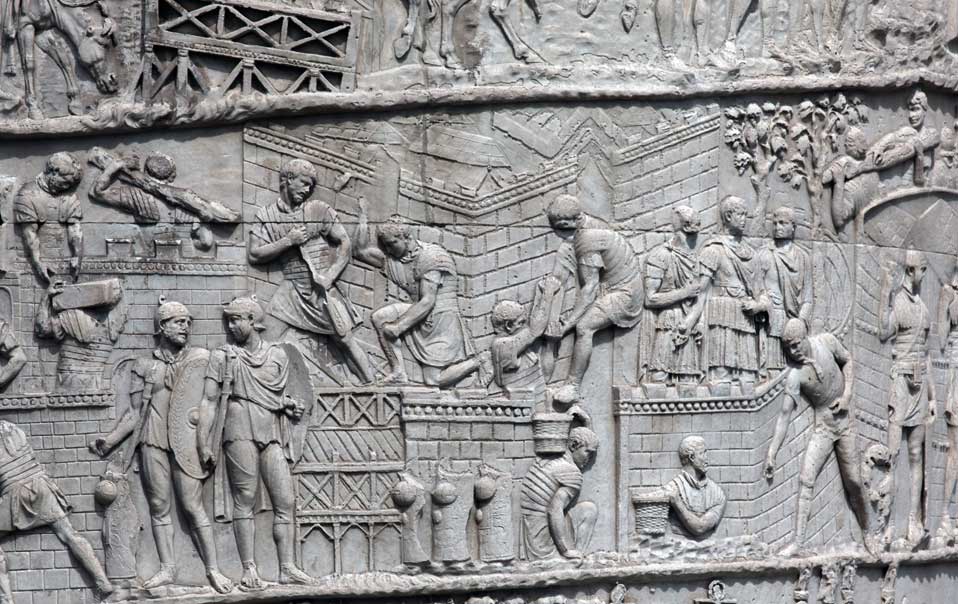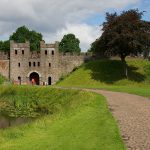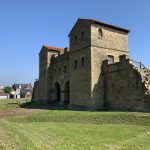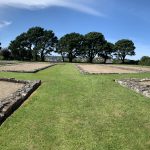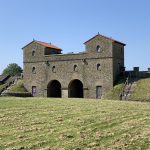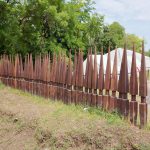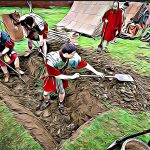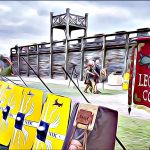There are traditionally three main types of Roman fortification; the Marching Camp, the Auxiliary Fort and the Legionary fortress. To these three basic types there has been recently added a fourth classification, that of Vexillation Fortress.
There are also smaller fortifications such as Fortlets, Signal Stations, Light Houses and Watch Towers. Of these types, the Fortlets may be viewed simply as small forts possessed of an unorthodox interior layout and with no administrative buildings, but these latter classes which, in general, are localised in their distribution within Britain and often unique in construction, are therefore not included in this general discussion.
Legionary Fortresses These were, as the name implies, the permanent strategic military encampments of the Roman legions, which were occupied for any period between tens of years like Wroxeter (Viroconium Cornoviorum) or even centuries likeYork (Eboracum). As they were built to house an entire legion, where the number of soldiers did not vary (i.e. c.5,200 legionaries), their size is fairly uniform at around fifty acres. Their defences are massive, generally of stone, although the Fortress at Exeter (Isca Dumnoniorum) was occupied for only a short period and its defences were merely of timber construction.
Vexillation Fortresses These were large encampments of a fairly uniform size, which were built to house task forces comprised of perhaps half a legion and several Auxiliary cohorts. They could be used for either a single summer campaign like the Rhyn Park fortress in Shropshire, or used successively over a number of seasons like the fortress at Lake Farm Roman Vexillation Fort in Dorset. Their purpose was therefore mainly tactical rather than strategic.
Auxiliary Forts These were generally rectangular or square in outline, posessed of a substantial rampart and may have several ditch systems. They were constructed at first mainly of timber but later in stone, and housed troops from allied and Romanized nations, who would become full Roman citizens on discharge, the Auxilia. These troops were not as highly trained (or as well paid) as were the citizen troops of the Roman Legions, and although they made their own Marching Camps, their Garrison Forts were actually built by the legionaries.
- The Structure of a Roman Fort
- Roman Forts and Fortlets in England
- Forts and Fortlets in Wales
- Forts and Fortlets in Scotland
Roman Fortlets
In the early second century, a new development occurred in Britain with auxiliary cohorts being divided into smaller units and stationed in two or more specially constructed camps. The camp that housed the commanding officer’s residence and the regimental headquarters is now referred to as a ‘small fort.’ In contrast, the other type of camp, lacking administrative buildings, is known as a ‘fortlet.’
Additionally, small forts were constructed for the accommodation of officers and men belonging to smaller auxiliary units known as ‘numeri’ (singular: ‘numerus’). To distinguish these, they are appropriately termed ‘numerus forts.’ It’s important to note that the original Roman terminology for these various smaller fortifications remains unknown.
Marching Camps These are characterized by a single narrow ditch and interior rampart, are generally rectangular in outline, but can vary widely in size. These camps generally represent the entrenchments made by a single Roman army unit for an overnight stop in field conditions, when the enemy is close at hand and there is chance of an attack. The size of the army unit on the march would obviously dictate the actual dimensions of the camp
